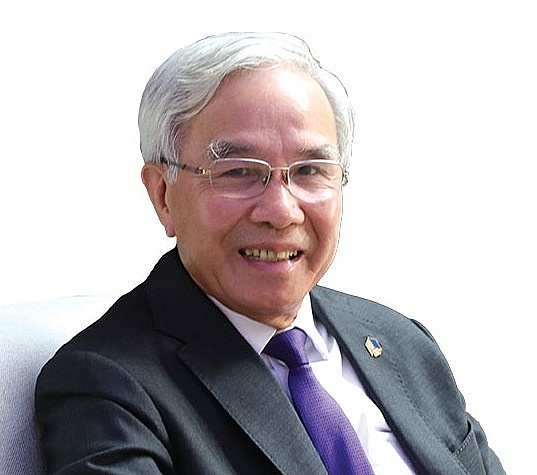How to unlock private capital for transport infrastructure
 |
| Assoc. Prof. Dr. Tran Chung - Chairman, Vietnam Association of Road Traffic Investors |
The country’s road development strategy is expected to open up new opportunities for domestic and foreign investors to participate. However, in order to create attractiveness for projects under public-private partnerships (PPPs), more incentive policies are needed.
The participation of private investors in transport infrastructure in particular began more than 20 years ago. At that stage, businesses mainly participated in projects through the build-transfer (BT) model, also known as land-for-infrastructure projects. These ventures quickly attracted the interest of private investors.
BT projects have made certain contributions to the development of transport infrastructure, contributing to the formation of many large urban areas. Many large-scale schemes created a new look for many provinces and cities, from Ba Ria-Vung Tau to Danang. Like the land of Thu Thiem in Ho Chi Minh City, it used to be very desolate even though it was a huge area of land.
After that, there were investors who applied for a BT project to fund infrastructure and build roads. When the infrastructure system developed, Thu Thiem became an attractive location for many investors. Currently, many more want to enter but no longer have the land.
Other transport-creating activities have included Geleximco with Hoa Lac-Hoa Binh Expressway; Him Lam JSC building the central intersection of Long Bien district in Hanoi, and Tasco JSC with Le Duc Tho Road to Xuan Phuong New Urban Area in Nam Tu Liem district of Hanoi.
However, the legal system has not kept up with development. Many problems related to land use and prices have arisen, leading to many problems in BT projects. Along with BT, the build-operate-transfer (BOT) model also attracts private investors. BOT infrastructure schemes have also contributed to the development of the country, and national transport infrastructure.
Initially, BOT transport projects were mainly implemented on existing works. BT and BOT are the forms of investment under the PPP model. The legal documents governing funding in the forms of BT and BOT contracts include various decrees; however, there are still many unreasonable regulations that do not harmonise the interests of the state, investors, and users, leading to conflict of interest.
 |
| illustration photo/ Source: Shutterstock |
The development of the country, and international integration, entails an increasing need for infrastructure development. The state calls for private investment to participate in order to reduce the budget burden and develop infrastructure. The PPP game has become more exciting in electricity, healthcare, and transportation.
In order to create more favourable conditions for domestic and foreign private investors, Vietnam has continued to reform the law and promulgate many new laws. In 2020, the BOT project of the road tunnel through Deo Ca was one of the significant and impactful PPP ventures, followed by various expressway ones.
To create a full and comprehensive legal framework for activities under the PPP model, in 2020, Vietnam promulgated the Law on PPP Investment, providing regulations on the responsibilities of involvers, as well as six forms of PPP funding, risk sharing, government guarantees, and others. These are the big issues that businesses expect to see solutions for in the long run.
Effective from January 2021, the law on PPP investment proves the effectiveness of the PPP model, bringing about benefits for road users, the state, and investors. However, not many PPP projects have been implemented since. Problems related to risk sharing and government guarantees have not been fully resolved as expected by investors.
In addition, models that have shown effectiveness in many countries, such as operations and management (O&M), build-lease-transfer, and build-own-operate, have not been applied much in the development of transport infrastructure in Vietnam.
In fact, the strongest development period of PPP investment in transport infrastructure in our country was in 2011-2015. However, since then, use of this model has decreased significantly. Only four PPP projects have been implemented; at the same time, five out of eight components of the eastern cluster of the North-South Expressway’s phase 1 had to be transferred from the PPP model into public funding because of many unsolved obstacles.
The problem of credit freezing is one of the major bottlenecks today. It is still difficult for businesses to get loans from credit institutions to invest in transport infrastructure projects. Many foreign investors are interested but cannot participate in international bidding. For example, the North-South Expressway held an international auction but could not attract investors.
The question of why there have been no foreign investors directly involved in BOT transport projects has still not been answered. To date, a number of them have participated, but through the acquisition of shares of a number of Vietnamese companies funding BOT projects.
The Ministry of Transport and the government have also called for foreign investors in BOT transport ventures in Vietnam. The ministry has announced bidding for international investors for the construction of Ring Road 3 in Ho Chi Minh City, the section of Tan Van-Nhon Trach, with the mechanism and policies in line with existing regulations.
According to assessments, this was an attractive project, but after studying the prequalification documents, investors decided not to participate because the risk allocation mechanism was not reasonable in terms of low profits, bearing the cost of site clearance, the risk of unsecured revenues, and more besides.
Many countries in the region have successfully implemented the PPP model by setting up development investment funds. In order to remove capital difficulties, we have proposed to the state to establish a fund for transport infrastructure development in Vietnam. However, it has not to date received approval.
Vietnam’s transport infrastructure is very attractive to domestic and foreign investors. However, we have not attracted much because of legal problems. We have many potential member businesses that have the desire to participate in transport infrastructure projects to contribute more to the development of the country, and look forward to receiving more favourable conditions.
To make Vietnam’s transport infrastructure really more attractive to businesses, we need to diversify PPP models. Many Japanese businesses are interested in the O&M model for example. In addition, we need to be more transparent about laws because if not, it will be very difficult for businesses to implement their plans.
What the stars mean:
★ Poor ★ ★ Promising ★★★ Good ★★★★ Very good ★★★★★ Exceptional
Related Contents
Latest News
More News
- Main drivers for Vietnam’s digital economy future (December 03, 2025 | 11:35)
- Pivotal stage of growth paves way for rise in M&As (December 03, 2025 | 10:00)
- Positive projections for M&A interest from Thailand (December 03, 2025 | 09:40)
- Manifesting the first line of defence in cybersecurity (December 03, 2025 | 09:00)
- The transformational role AI can play in accounting arena (December 03, 2025 | 08:00)
- Unlocking 5G-AI potential in Singapore (December 03, 2025 | 08:00)
- Data-driven strategies vital for a fast-evolving nation (December 02, 2025 | 09:41)
- Policy to practice: how Vietnam can lead the region (November 26, 2025 | 16:03)
- Mobilising private capital at scale vital for climate battle (November 26, 2025 | 15:36)
- VILAF and Yoon & Yang launch Vietnam - Korea Practice Unit (November 26, 2025 | 15:16)

 Tag:
Tag:





















 Mobile Version
Mobile Version